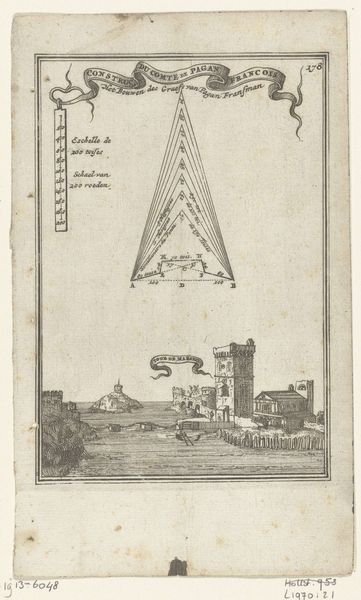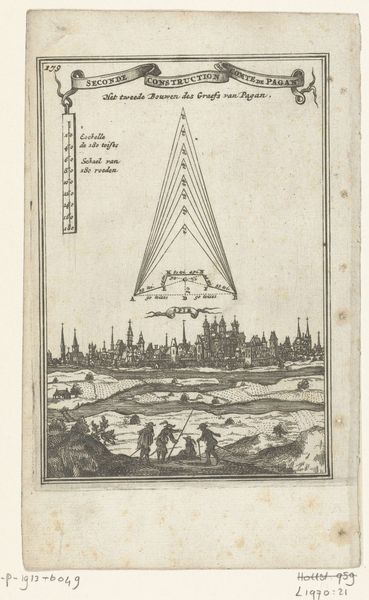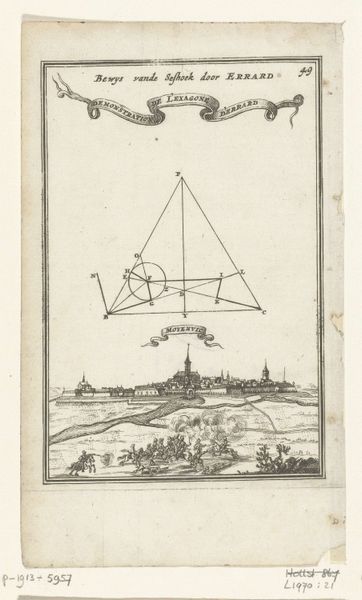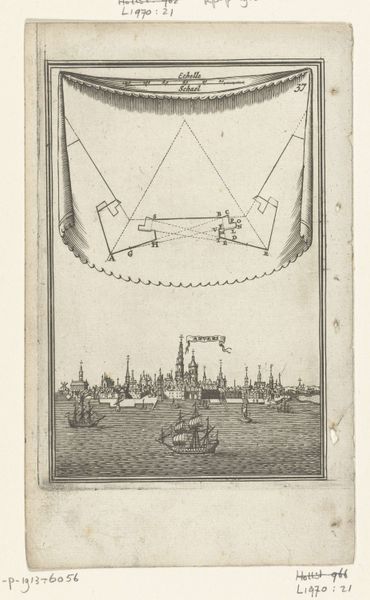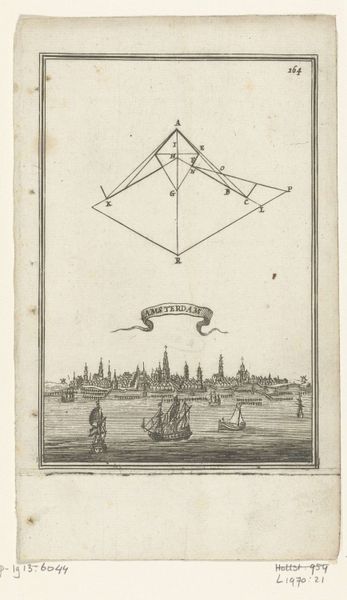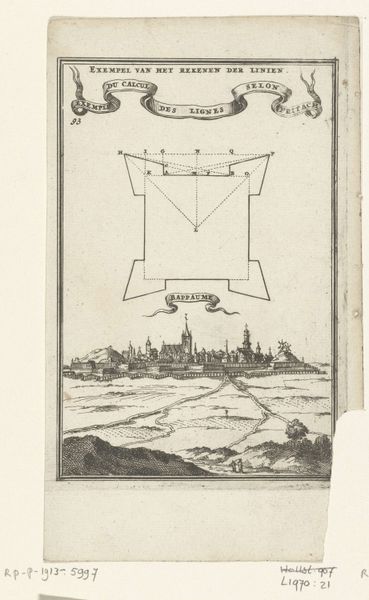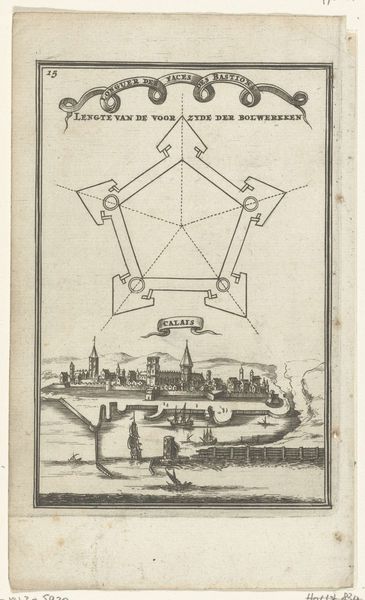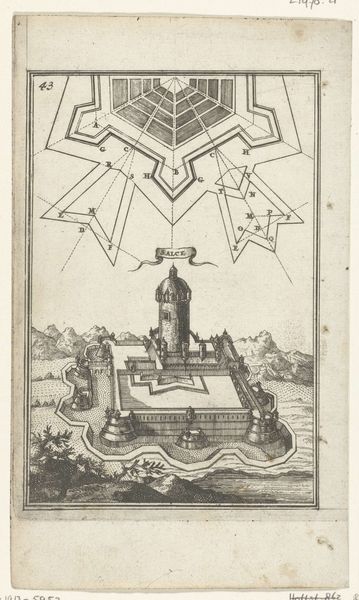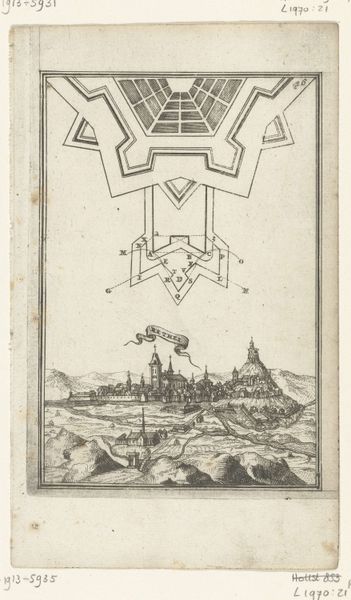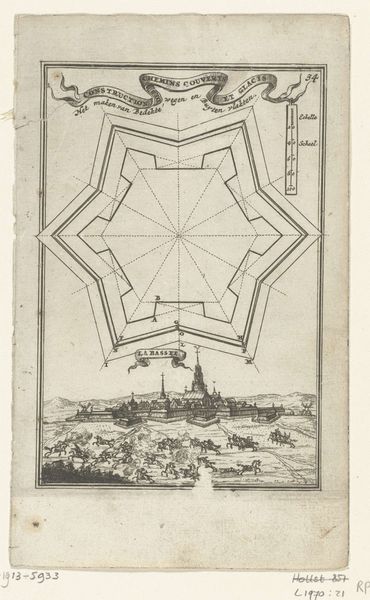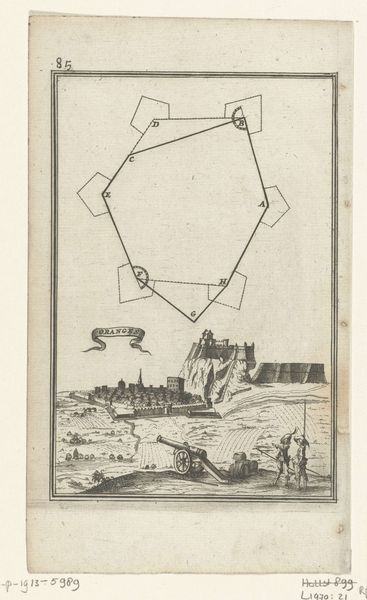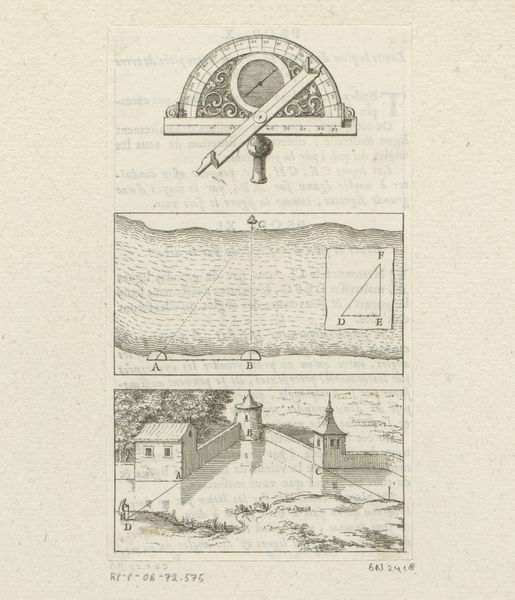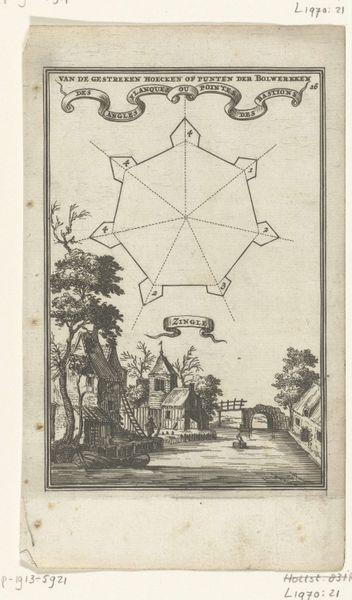
Illustratie voor 'Den Arbeid van Mars' van Allain Manesson Mallet 1672
0:00
0:00
romeyndehooghe
Rijksmuseum
drawing, engraving
#
drawing
#
aged paper
#
light pencil work
#
baroque
#
old engraving style
#
sketch book
#
landscape
#
river
#
personal sketchbook
#
pen-ink sketch
#
ink colored
#
pen work
#
sketchbook drawing
#
sketchbook art
#
engraving
Dimensions: height 185 mm, width 111 mm
Copyright: Rijks Museum: Open Domain
Curator: Let’s consider this engraving titled “Illustratie voor 'Den Arbeid van Mars' van Allain Manesson Mallet,” created around 1672 by Romeyn de Hooghe. It resides here at the Rijksmuseum. Editor: Immediately, I’m struck by the contrast between the almost sterile geometry at the top and the bustling landscape scene below. It's like two different worlds coexisting on one page. Curator: That tension, I think, speaks to the intersection of power and practicality. The geometric figure, labeled as 'the third rule of the Count de Pagan,' most likely served some cartographical or military function—imposing order onto the natural world. The 'Arbeid van Mars', alluded to in the artwork's longer title, relates this imagery directly to warfare. Editor: The landscape feels almost secondary, yet it's teeming with symbolic elements. The river, the buildings, and especially the windmill… it calls up well-worn tropes of Dutch prosperity, hard-won from the land and sea. It’s tempting to view these markers of the Dutch Golden Age through a celebratory lens. But where’s the darkness? Who pays for all this industry? Curator: Indeed. Consider that this "golden age" was built upon global trade networks, deeply entangled with colonial exploitation. De Hooghe himself, while a master engraver, produced works that propagated harmful stereotypes, and it would be disingenuous to not situate this image within the history of oppressive Dutch practices. This artwork offers itself for the examination of those inequalities. Editor: Absolutely. The engraving uses symbols to carry an emotional load; the windmill isn't just a windmill; the ships aren't just a merchant’s vessels; the water that facilitates prosperity isn't something shared equitably by all. Curator: By analyzing its historical and material circumstances, and foregrounding our contemporary concerns with it, we might confront the latent politics within ostensibly neutral images, which, in turn, might lead us to examine other artworks through a renewed and critical lens. Editor: By tracing the threads of imagery, this piece opens up broader historical questions that echo through collective and individual consciousness. Perhaps it's an exercise in how we might see then and, perhaps more importantly, how we see now.
Comments
No comments
Be the first to comment and join the conversation on the ultimate creative platform.
